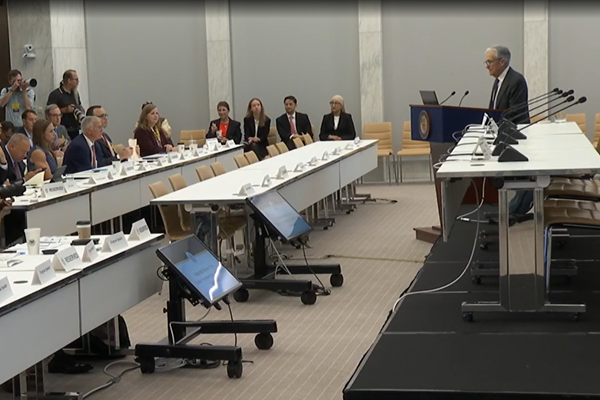.png)
Through the Glass Darkly: Listing The Known Unknowns
As global risks mount, from volatility in the Russian oil supply to uncertainty over the future of the Fed chair, are we adequately prepared for the coming economic shocks?


Abheek, an independent economist and ex-Chief Economist at HDFC Bank, provides deep insights into financial markets and policy trends.
July 23, 2025 at 10:02 AM IST
It may be the right time to take out the old crystal ball and gaze at the uncertainties surrounding us. Perhaps it is time to ask the ‘what if’ questions and carefully list the known unknowns.
One could justifiably put the question of Russian oil at the top of this list. US senator and principal Russia-baiter Lindsey Graham’s warned, “If you keep buying cheap Russian oil to allow this war to continue, we’re going to tear up the hell out of you, and we’re going to crush your economy." This might be a trifle exaggerated; however, India and other buyers of Russian oil need to be prepared for higher, perhaps significantly higher, prices in future. EU sanctions on Russia have already bitten the Indo-Russian refiner Nayara Energy. Punitive tariffs by the US are likely to make Russian oil a lot dearer.
The question then is: Has the government, the Reserve Bank of India, or private forecasters adequately factored this possibility into their forecasts of growth and inflation? Are they instead operating on the “we will chug along fine” premise, risking a shock later? Does the government have a plan beyond calling out the EU and US’s double standards? Indian imports of American oil have surged by 270% in the first four months of 2025. Is this part of a quiet strategy that can be scaled up if importing from Russia indeed becomes a no-no?
The second risk pertains to the Fed and global monetary policy. As pressure on Chairman Jerome Powell to resign mounts with US
Treasury Secretary Scott Bessent starting a full-blown enquiry into the Fed’s non-monetary activities, the markets could begin to price in uncertainty over the direction of US monetary policy in a post-Powell world well in advance. This would happen even if Powell were to last until the end of his term in 2026.
There are two possibilities that markets could fret over going forward. First, if Powell’s replacement delivers a body blow to US central bank independence and works at the behest of the White House, that is, cuts rates irrespective of how inflation and other indicators perform. If this expectation prevails, it could result in a full-blown bond sell-off in the US and drag other bond markets down with it. The turbulence would persist as markets struggle with an entirely new paradigm of monetary policy that last prevailed in America in the 1970s.
One of the likely picks, Kevin Hassett, the chair of President Trump’s National Economic Council, has incidentally published a controversial report claiming that the prices of imported goods are falling despite tariffs. His comments in the media suggest that he holds a quintessentially Trumpian economic world view. Tariffs, he argued, are not a major risk for inflation and revenues from them will be hefty enough to help squeeze the fiscal gap. This is certainly at odds with the Fed’s—and indeed, most mainstream economists’—current view on risks going forward.
Second, if Bessent and other more ‘rational’ members of the US administration convince President Trump and the new chairman that central bank independence is indeed sacrosanct, the markets would price in a far more dovish but largely independent Fed. Nothing is certain at this stage except the fact that the markets will keep guessing about likely scenarios resulting in turbulence.
The uncertainty over the future of US central banking couldn’t come at a worse time for the global economy. For one, there is likely to be a decoupling of inflation trajectories between the US and the rest of the world. The Hassett report notwithstanding, the US is likely to see inflation on the back of tariffs while major exporters like China will see deflation as export demand wanes. This decoupling will impact global currency and bond markets.
The risks of the dollar’s deglobalisation will queer the pitch further as it breaks the long-established relationship between interest “carry” and exchange rates. The need of the hour —and the months ahead —is for hard-nosed, conservative central bankers, not mavericks.
Given these risks, the key question is: are we prepared?



